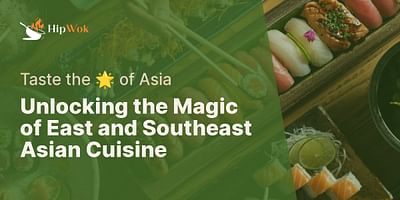A Hong Kong native, Dina Dooley is a seasoned professional in Asian culinary arts, boasting a career that spans over 15 years. Wok cooking is her area of expertise, and she thrives on imparting her understanding and enthusiasm for food to others. Dina's culinary journey has taken her across Asia, immersing herself in diverse cooking techniques and ingredients. She brings this comprehensive knowledge to Hip Wok, where she shares her treasured recipes and valuable cooking advice.
Great question! The reason Western cooking didn't traditionally use a curved bottom utensil like a wok is because the cooking techniques and styles in the West developed differently from those in Asia. Let me explain.
In Western cooking, the focus has historically been on using flat-bottomed pans and pots. These are designed to maximize contact with the heat source, which is typically a stove burner or an oven. The flat surface allows for even heat distribution, making it easier to sauté, simmer, and braise various ingredients.
On the other hand, Asian cooking, particularly in countries like China, Thailand, and India, has a long history of using curved bottom utensils like the wok. The wok's unique shape is specifically designed to optimize stir-frying, a popular cooking technique in Asian cuisine.
The curved bottom of a wok allows for heat to be concentrated at the bottom while the sides stay cooler. This design enables quick and efficient stir-frying, as ingredients can be pushed up the sides to prevent overcooking while new ingredients are added to the hot center. The high heat and rapid cooking time in a wok also help retain the natural flavors, colors, and textures of the ingredients.
So, why didn't Western cooking adopt the wok? Well, it's mainly because the traditional Western cooking techniques and recipes didn't require the same level of heat and speed as stir-frying. Western cuisine tends to focus more on slow cooking methods, such as roasting, baking, and simmering, which are better suited to flat-bottomed pans and pots.
However, in recent years, the popularity of Asian cuisine has grown significantly in the West. As a result, many Western cooks and chefs have started to embrace the wok and its unique cooking style. It's now common to find woks in Western kitchens, especially those that specialize in Asian-inspired dishes.
If you're interested in trying out wok cooking in your own kitchen, I highly recommend investing in a good-quality wok. Look for one made from carbon steel, as it heats up quickly and retains heat well. A wok with a wooden or heat-resistant handle is also essential for safe handling.
Remember, the wok isn't just for stir-frying! You can use it to cook a wide variety of dishes, from soups and stews to steamed dishes and even deep-fried treats. Its versatility makes it a fantastic addition to any kitchen, regardless of your culinary background.
So, don't be afraid to explore the world of wok cooking and experiment with new flavors and techniques. With a little practice and a lot of passion, you'll soon be creating delicious Asian-inspired meals right in your own home. Happy wok cooking!















